
The art of Ancient Greece is an endless source of aesthetic pleasure for descendants
The art of Ancient Greece has given humanity numerous unique masterpieces created on the territory of the Balkan Peninsula, the shores of the Eastern Mediterranean, and the Black Sea from the mid-11th century to the mid-1st century BCE. Ancient Greek art rightfully stands as an essential part of the world's cultural heritage. It was shaped under the influence of the philosophy of the ancient era, where beauty and harmony of forms were exalted.
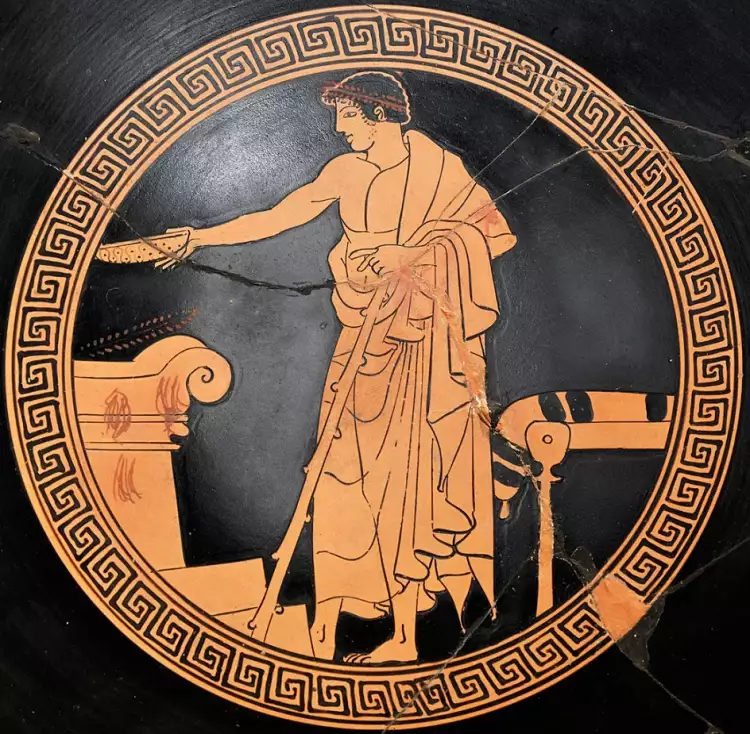 The art of Ancient Greece. Fiala depicting a young man offering a wine sacrifice, 5th century BC
The art of Ancient Greece. Fiala depicting a young man offering a wine sacrifice, 5th century BC
Ancient Greek art had a significant impact on neighboring civilizations, especially after the extensive conquests of Alexander the Great. Its standards widely spread within the Roman Empire and, centuries later, became the basis for the formation of humanistic ideas during the Renaissance.
Main Periods of Ancient Greek Art
The art of Ancient Greece has deep roots in the culture of the Aegean (Minoan-Mycenaean) Bronze Age civilization that existed in the Eastern Mediterranean from the 30th to the 10th century BCE. At the end of this period, Dorian tribes arrived in the territory, displacing the Aegeans and establishing their own cities (polis) on the Peloponnesian Peninsula. The conquerors partially preserved the old cultural traditions but soon began actively creating new art.
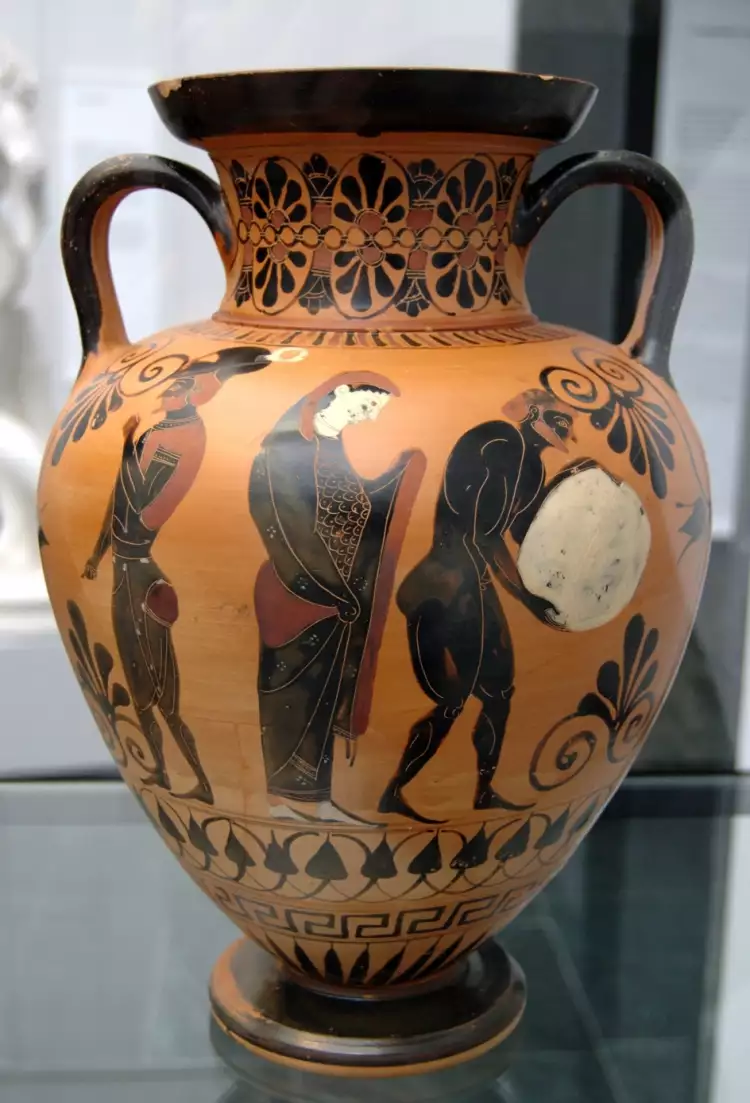 The art of Ancient Greece. Antique vase, 6th century BC
The art of Ancient Greece. Antique vase, 6th century BC
Contemporary historians distinguish the following main periods of Ancient Greek art:
- Geometric (mid-11th to 7th centuries BCE).
- Archaic (7th to 5th centuries BCE).
- Classical (5th to mid-4th centuries BCE).
- Hellenistic (mid-4th to mid-1st centuries BCE).
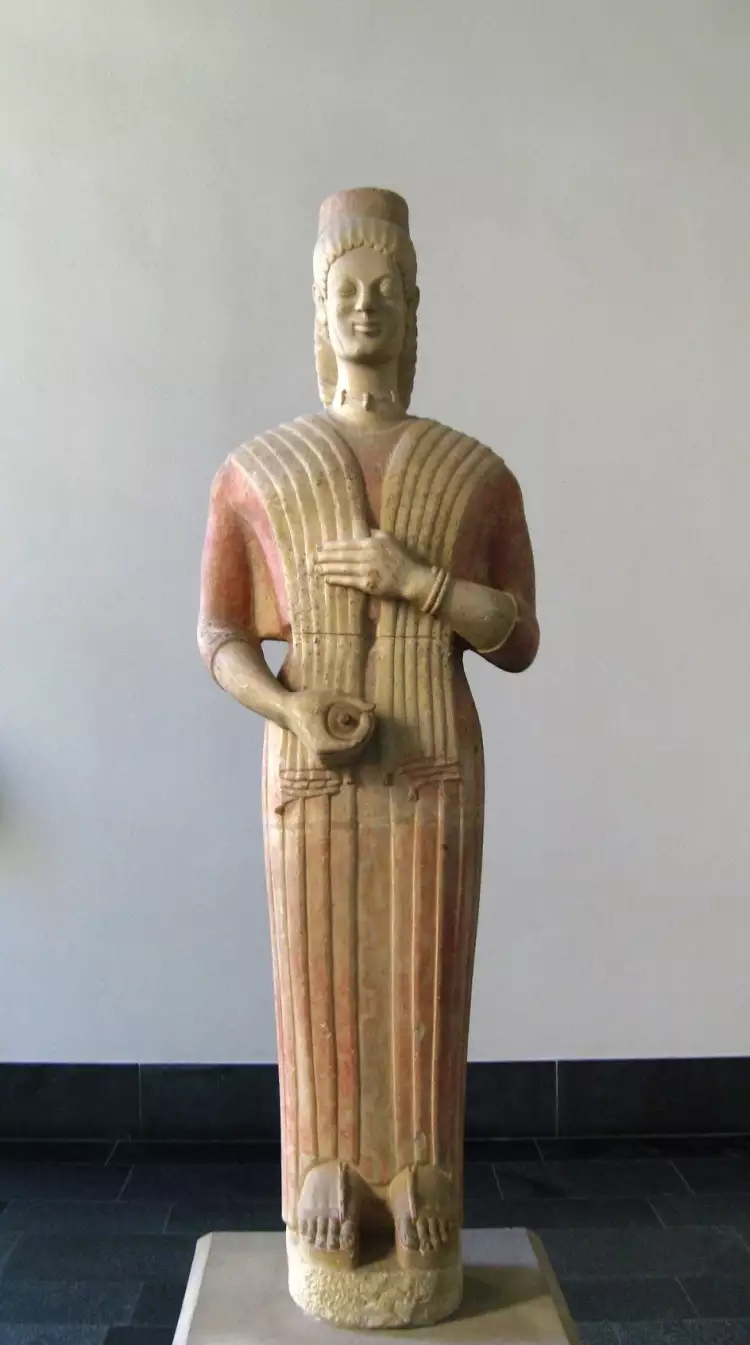 The art of Ancient Greece. Sculpture of the Goddess with a pomegranate, 6th century BC
The art of Ancient Greece. Sculpture of the Goddess with a pomegranate, 6th century BC
The end of the era of Ancient Greek art is conventionally considered to be the year 30 BCE when the last Hellenistic state, the Ptolemaic Kingdom, finally lost its independence and was incorporated into the Roman Empire as a regular province.
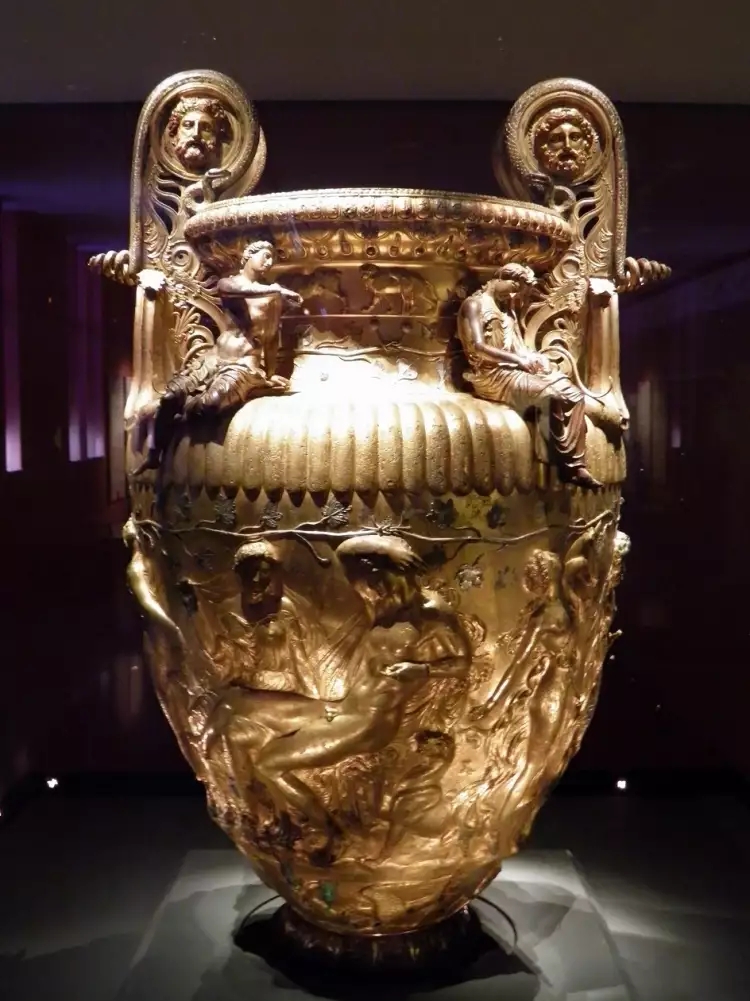 The art of Ancient Greece. Derveni Crater, 4th century BC
The art of Ancient Greece. Derveni Crater, 4th century BC
The Geometric period got its name from a characteristic feature of vase painting that was common during that time. Geometric ornaments, prevalent in the decoration of ceramic vessels since the late Aegean culture, were complemented with new patterns, including the famous meanders.
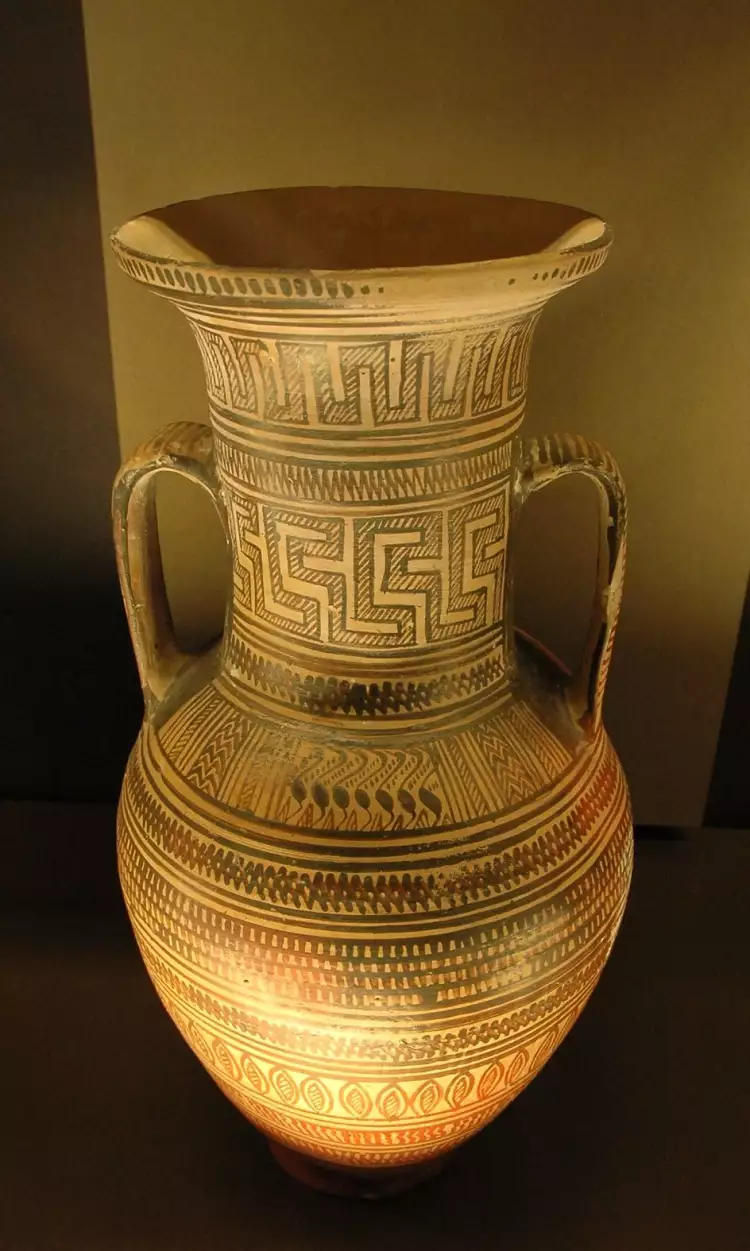 The art of Ancient Greece. Andokides. Amphora in late geometric style, 8th century BC
The art of Ancient Greece. Andokides. Amphora in late geometric style, 8th century BC
Significant changes occurred in architecture. Instead of hewn stone blocks, builders started using raw bricks, and temples were constructed with a new typology featuring four-sloped roofs. In sculpture, the main subjects of artworks were images of horses, painted in a geometric style.
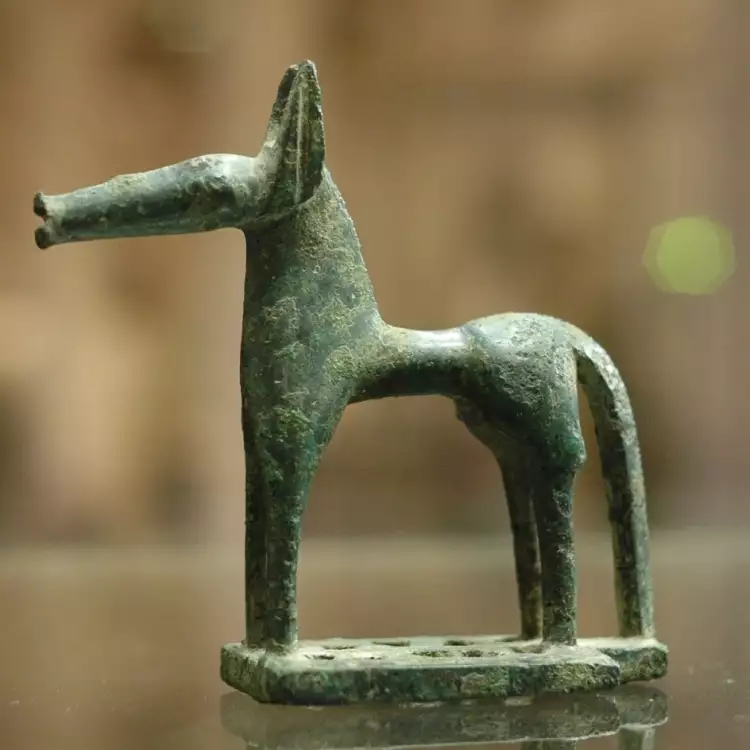 The art of Ancient Greece. Bronze statuette of a horse, 8th century BC
The art of Ancient Greece. Bronze statuette of a horse, 8th century BC
In the Archaic period, the technique of black-figure ceramics was invented, and classical types of monumental sculpture began to take shape. The first statues of naked youth athletes and clothed women appeared, and many canons of sculptural art were borrowed from Ancient Egyptian culture.
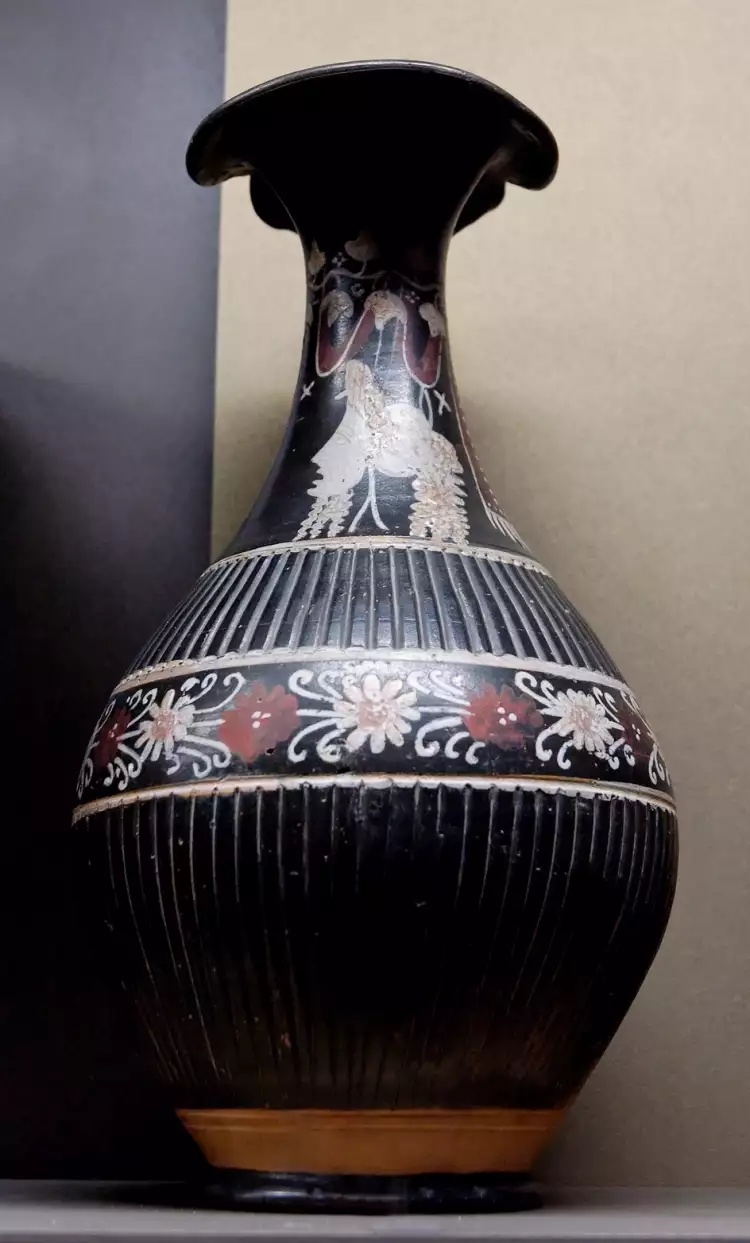 The art of Ancient Greece. Oinochoya Gnathia, 3rd century BC
The art of Ancient Greece. Oinochoya Gnathia, 3rd century BC
The Classical period marked the peak of Ancient Greek art. It was during this time that the most famous temples were created, and marble was widely used for constructing grand buildings instead of limestone. Significant changes occurred in sculptural art. Images of people, mythological heroes, and ancient gods became more realistic, and the proportions of the human body in the works of sculptors acquired ideal forms. The great sculptors of that era not only mastered the creation of impeccable human figures but also skillfully conveyed various emotions of heroes in stone.
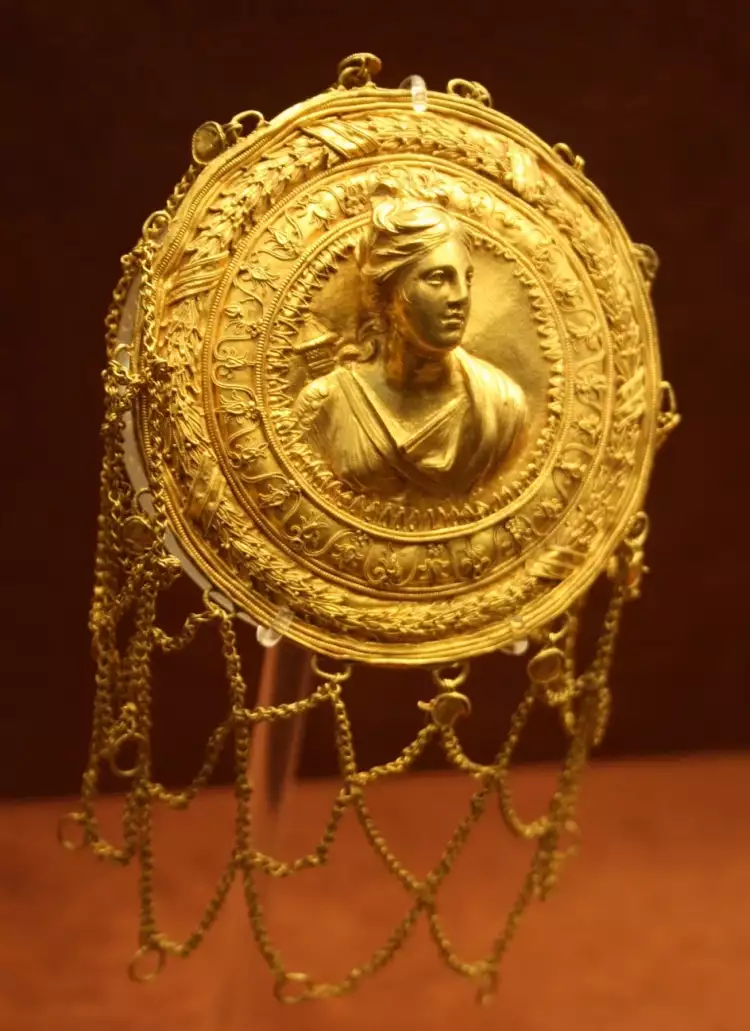 The art of Ancient Greece. A gold hair ornament with a net, 3rd century BC
The art of Ancient Greece. A gold hair ornament with a net, 3rd century BC
In the Hellenistic era, a massive urban development of ancient Greek city-states began in architecture. Instead of scattered buildings, architects designed enormous complexes that included temples, public buildings, places for leisure and entertainment. Sculpture saw the emergence of numerous new stylistic directions, and the depictions of heroes became more refined, with multi-figure compositions gaining widespread popularity.
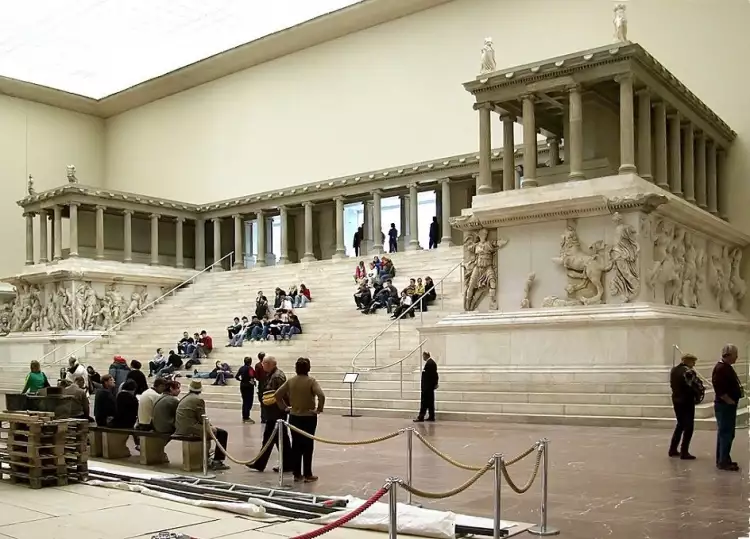 The art of Ancient Greece. Pergamon Altar of Zeus, 2nd century BC
The art of Ancient Greece. Pergamon Altar of Zeus, 2nd century BC
Types of Ancient Greek Art
The history of ancient Greek art spans a thousand years. During this immense span of time, numerous great masterpieces were created, which continue to captivate millions of people on Earth today. Greek art masters knew how to mint coins and paint walls, work with glass, and create paintings on wooden panels, sew exquisite costumes, and make comfortable furniture. Nevertheless, the most important types of Ancient Greek art include:
- Architecture.
- Sculpture.
- Decorative and Applied Art.
- Music.
- Literature.
- Theater.
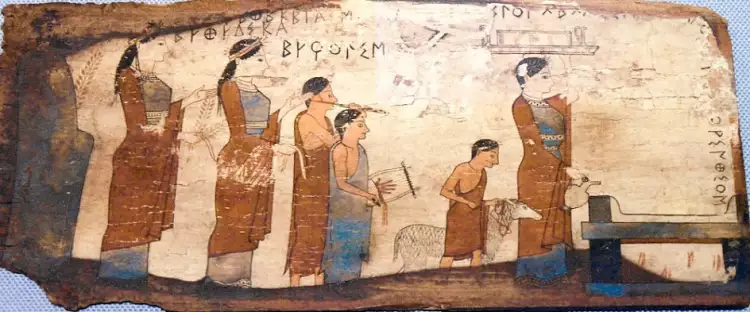 The art of Ancient Greece. Tablets from Pica, 6th century BC
The art of Ancient Greece. Tablets from Pica, 6th century BC
Ancient Greek architecture is beyond comparison with the achievements of the previous Aegean civilization in this field. Ancient Greek masters not only bequeathed the world classical architectural styles: Doric, Ionic, and Corinthian but also created truly unique architectural masterpieces.
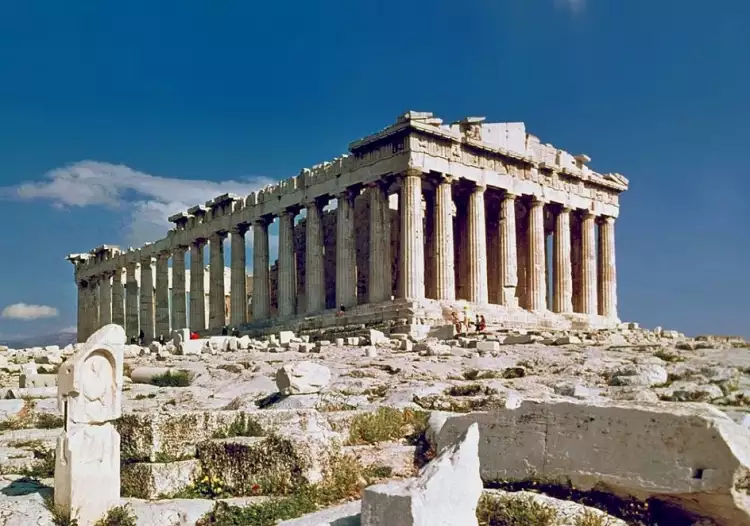 The art of Ancient Greece. Ictinus, Callicrates, and Phidias. Parthenon, 5th century BC
The art of Ancient Greece. Ictinus, Callicrates, and Phidias. Parthenon, 5th century BC
The most famous ancient Greek architectural monuments rightfully include:
- The Temple of Hera in Olympia.
- The Temple of Zeus in Athens.
- The Temple of Apollo in Delphi.
- The Temple of Artemis in Ephesus.
- The Parthenon in Athens.
- The Temple of Demeter in Eleusis.
- The Mausoleum in Halicarnassus.
- The Altar of Zeus in Pergamon.
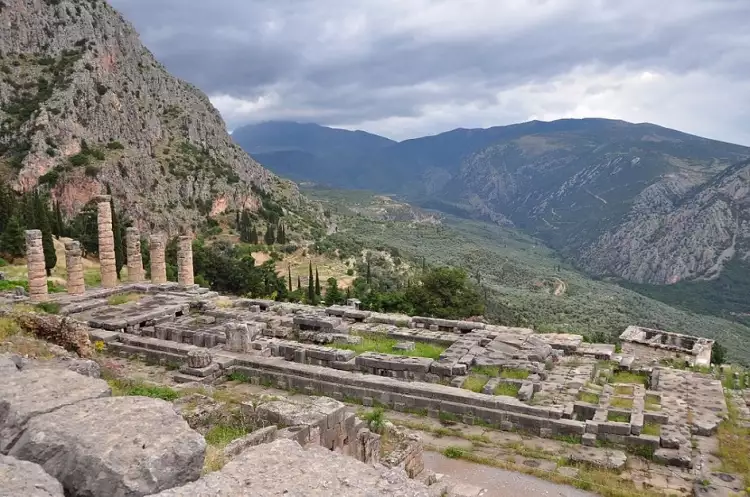 The art of Ancient Greece. Ruins of the Temple of Apollo at Delphi, 6th century BC
The art of Ancient Greece. Ruins of the Temple of Apollo at Delphi, 6th century BC
In addition, many ruins of public buildings and structures (stadiums, theaters, palaces, tombs, and gates) have survived to this day. Unfortunately, most of them are in a dilapidated state and require serious restoration.
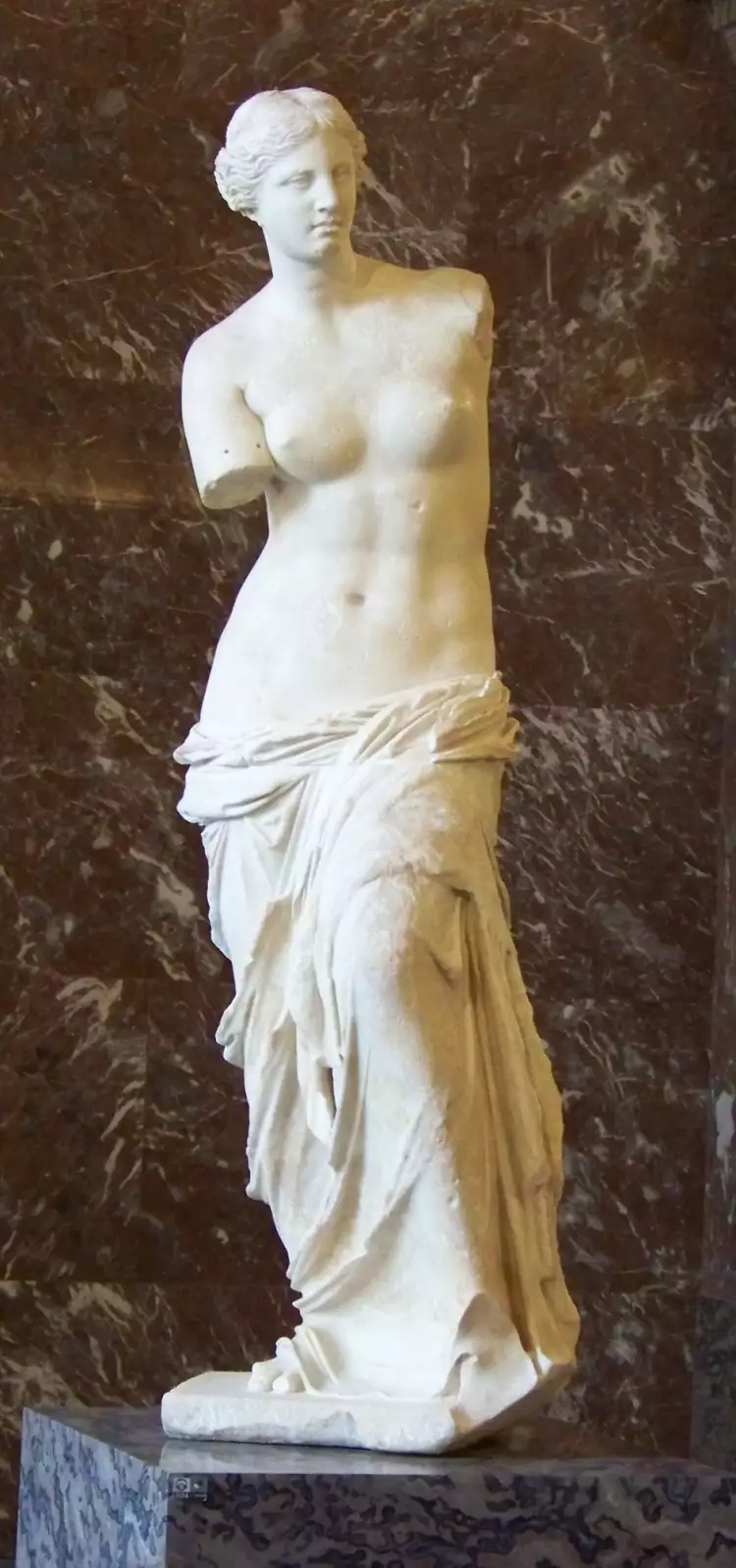 The art of Ancient Greece. Alexander of Antioch. Sculpture of Venus of Milos, II century BC
The art of Ancient Greece. Alexander of Antioch. Sculpture of Venus of Milos, II century BC
Ancient Greek sculpture also deserves the most majestic epithets and rightfully belongs to the highest achievements of classical culture. Beautiful statues, reliefs, and still today inspire admiration, although most of them are known to us through expertly crafted Roman copies.
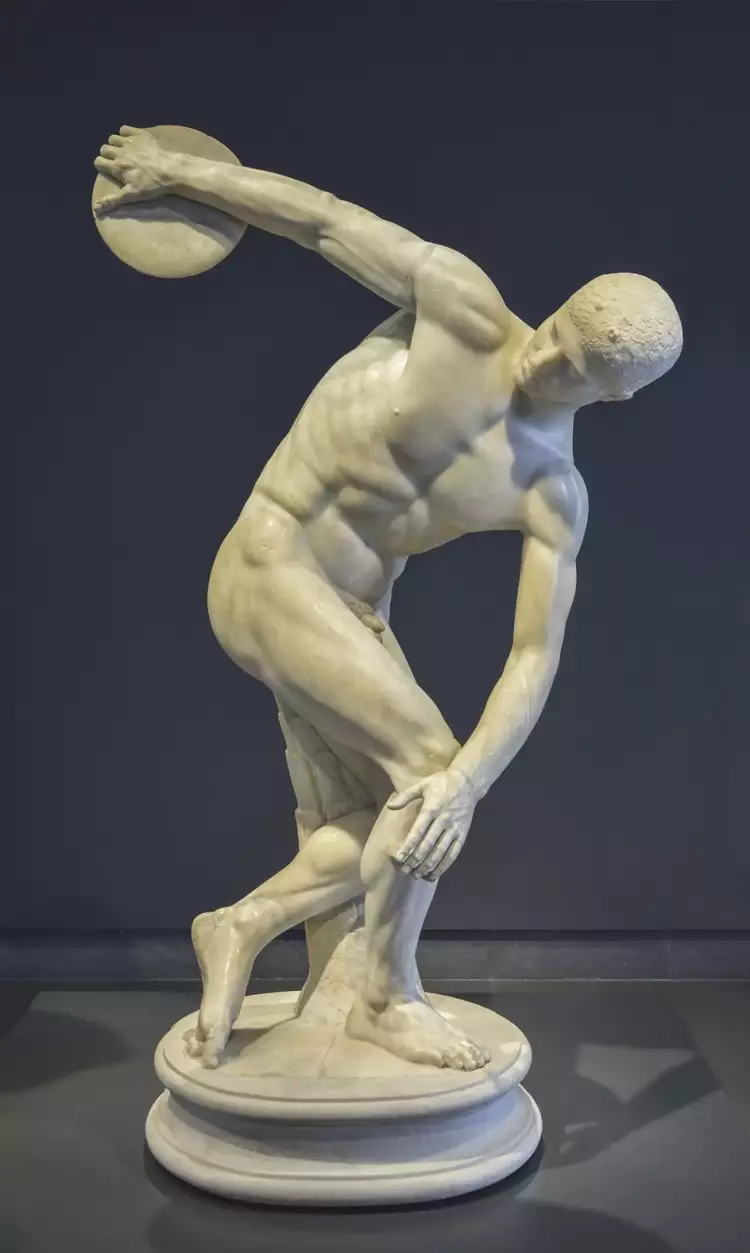 The art of Ancient Greece. Myron. Sculpture of Discobolus, V century BC
The art of Ancient Greece. Myron. Sculpture of Discobolus, V century BC
Among the most famous ancient Greek sculptors, the following stand out:
- Myron (Μύρων).
- Polyclitus (Πολύκλειτος).
- Paionios (Παιώνιος).
- Phidias (Φειδίας).
- Skopas (Σκόπας).
- Lysippos (Λύσιππος).
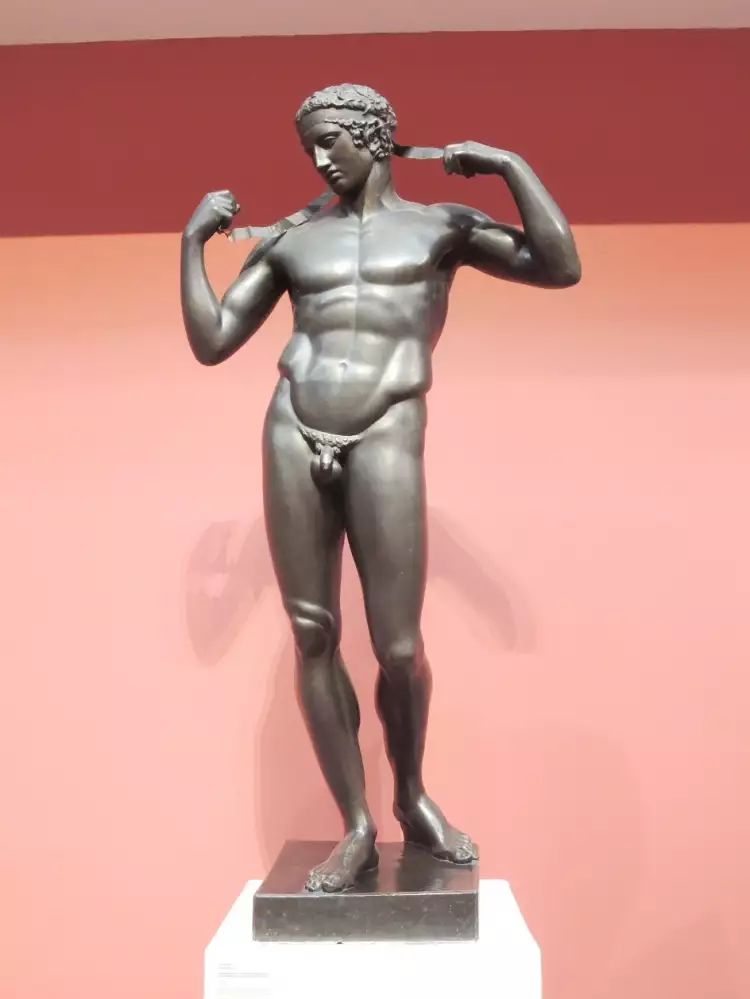 The art of Ancient Greece. Polycletus. Sculpture of Diadumenus, 5th century BC
The art of Ancient Greece. Polycletus. Sculpture of Diadumenus, 5th century BC
Each of them has forever engraved their name in the history of world culture and created their own unique style in the art of sculpture.
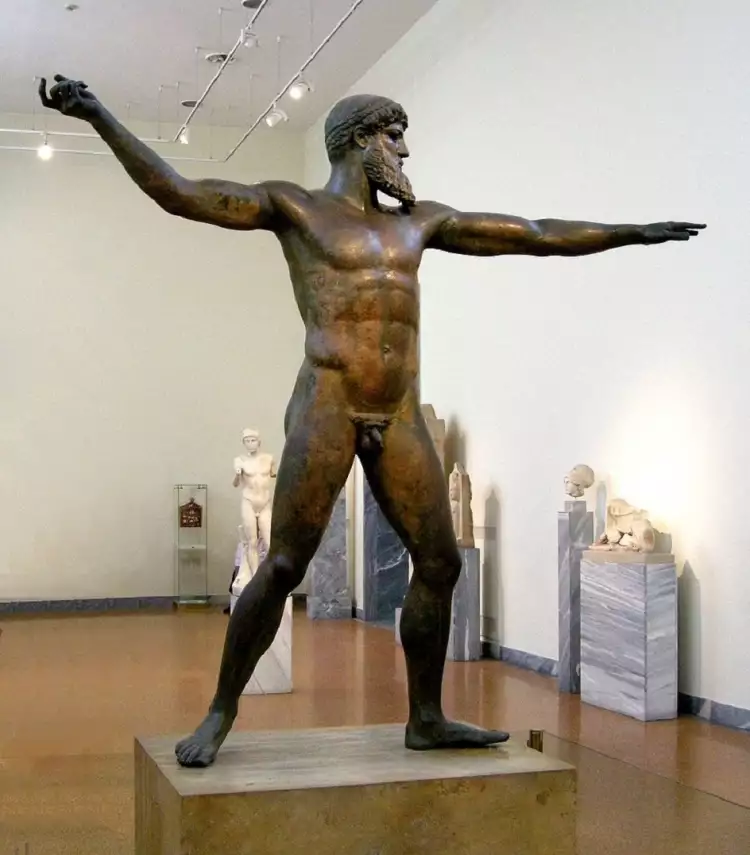 The art of Ancient Greece. Poseidon from Cape Artemision, 5th century BC
The art of Ancient Greece. Poseidon from Cape Artemision, 5th century BC
Decorative and applied art of Ancient Greece is most known to descendants through unique painted vases, mosaics, and jewelry. Preserved examples of ceramic pottery give modern people an idea not only of the high level of pottery craftsmanship but also the skill of painters of that era.
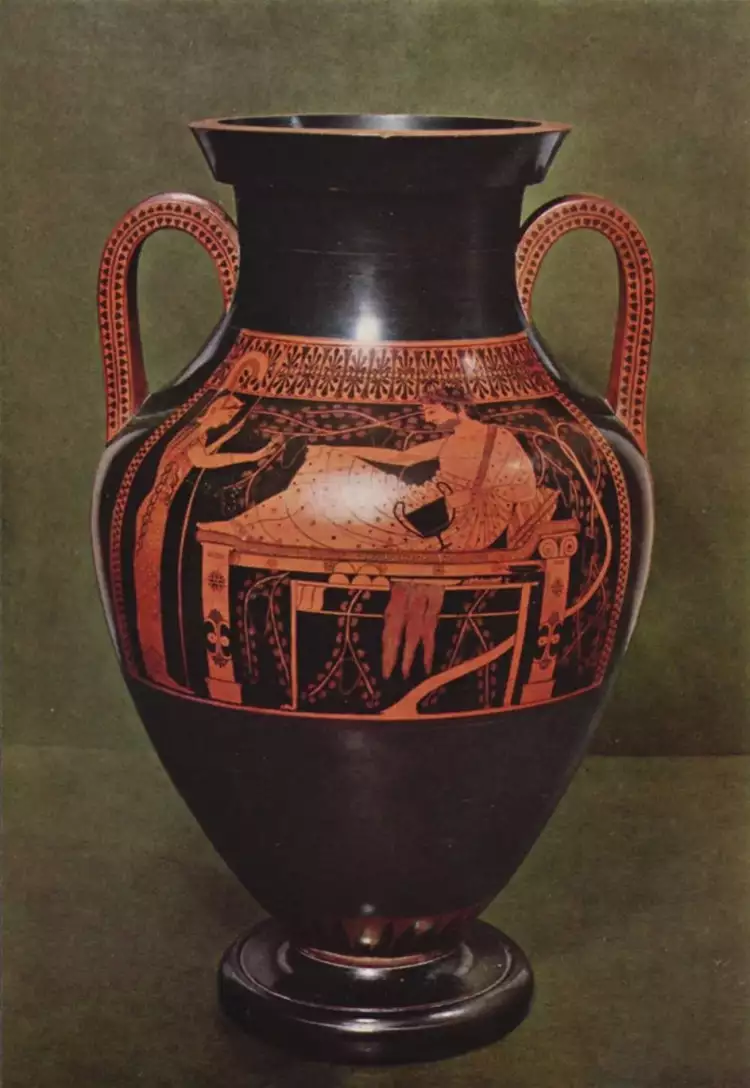 The art of Ancient Greece. Andokides. Amphora bilingual Heracles and Athena, 6th century BC
The art of Ancient Greece. Andokides. Amphora bilingual Heracles and Athena, 6th century BC
Unique works of art can also include enamel mosaic panels created by Greek masters. Images of people and animals framed by distinctive ornaments are often found in the decoration of ancient temples and palaces. In the field of jewelry art, in addition to ornaments made of gold and silver, special attention is deserved by gems (intaglios and cameos). Ancient masters crafted brooches, signet rings, clasps, medallions, and amulets from precious and semi-precious stones.
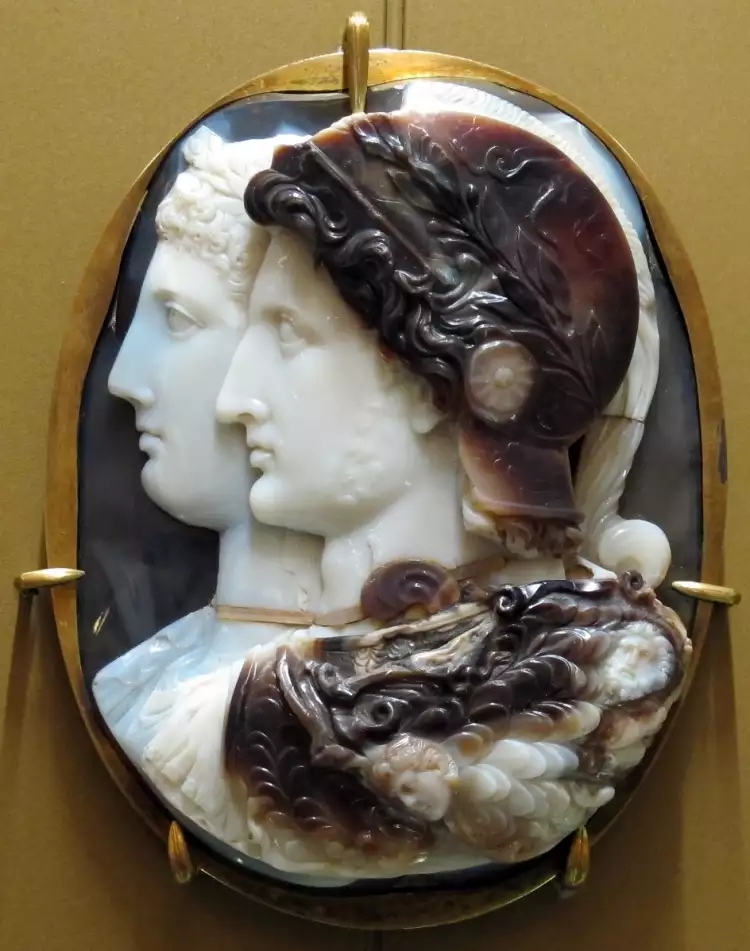 The art of Ancient Greece. Gemma Cameo of Gongaza, 3rd century BC
The art of Ancient Greece. Gemma Cameo of Gongaza, 3rd century BC
Literature, music, and theater also played an important role in the lives of ancient Greeks, although only a minuscule number of works in these art forms have survived to our times. But Homer's poems, the tragedies of Aeschylus, Sophocles, and Euripides, and Aristophanes' comedies are still being read by people, even though more than 2,000 years have passed since their writing.
The art of Ancient Greece remains a source of immense aesthetic pleasure for millions of people all over the world. It allows us to delve deep into the centuries and appreciate the greatness of a unique culture created by many generations of great masters of the past.

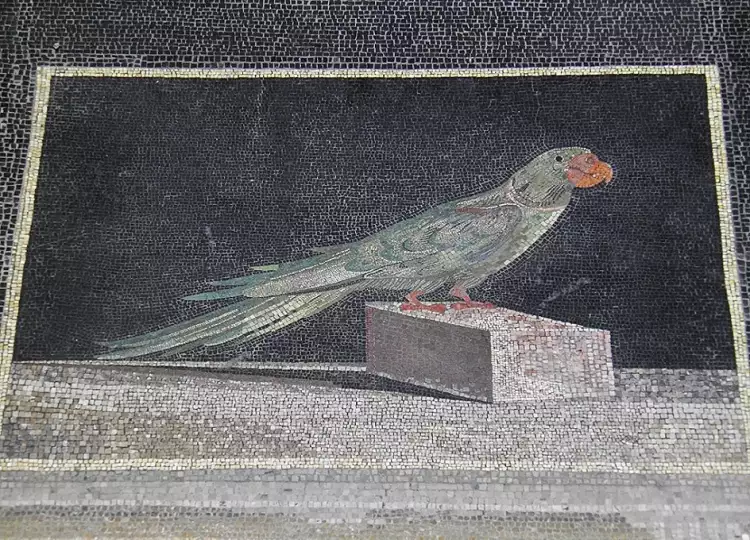
 Peredvizhniki: Revolution in Russian Art of the 19th century
Peredvizhniki: Revolution in Russian Art of the 19th century 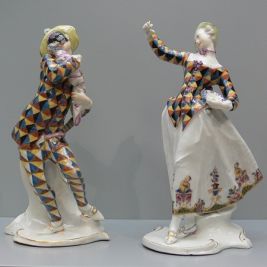 Nymphenburg Manufactory: A History of Porcelain Production
Nymphenburg Manufactory: A History of Porcelain Production  Street Art and Neo-Expressionism: Vital Art Trends of 2023
Street Art and Neo-Expressionism: Vital Art Trends of 2023  Landscape - a genre in painting: views, history, evolution
Landscape - a genre in painting: views, history, evolution  The painting "Portrait of an Artist (Pool with Two Figures)" by David Hockney is a cult work by the most influential contemporary artist
The painting "Portrait of an Artist (Pool with Two Figures)" by David Hockney is a cult work by the most influential contemporary artist  Neoclassical style in interior design is a modern interpretation of the noble traditions of antiquity
Neoclassical style in interior design is a modern interpretation of the noble traditions of antiquity  Still life is a genre of painting that perfectly reflects the artist's inner universe
Still life is a genre of painting that perfectly reflects the artist's inner universe  Postmodernism style in interior design - a game without rules
Postmodernism style in interior design - a game without rules  The painting "Cross in the Mountains" ("Tetschen Altar") by Caspar David Friedrich is an attempt to convey the presence of God through the elemental force of nature
The painting "Cross in the Mountains" ("Tetschen Altar") by Caspar David Friedrich is an attempt to convey the presence of God through the elemental force of nature  Giovanni Guida is an Italian artist-innovator and master of grattage
Giovanni Guida is an Italian artist-innovator and master of grattage